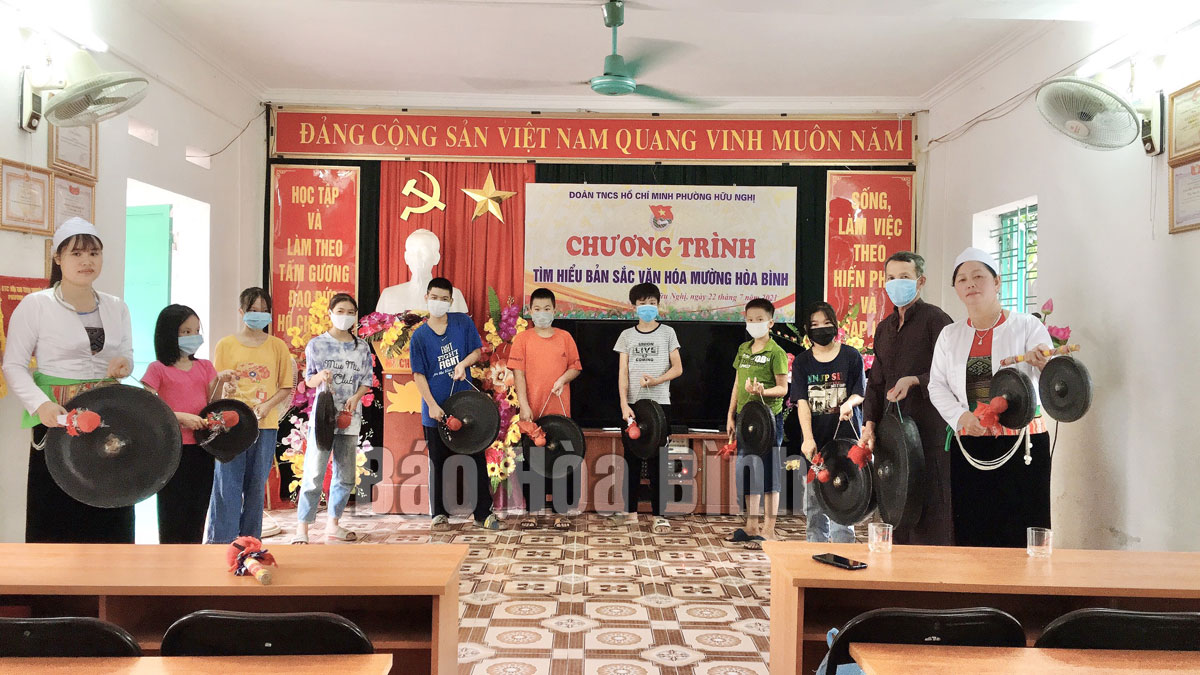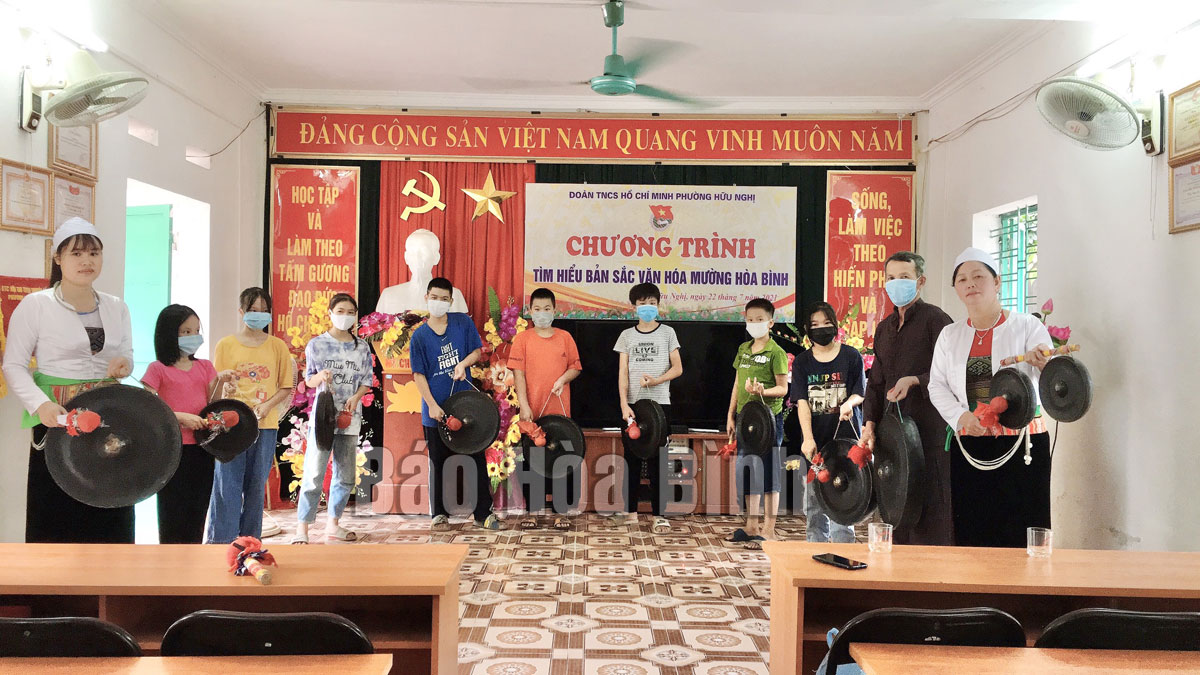
(HBO) – Although Huu Nghi ward is located in bustling Hoa Binh city, it still preserves the traditional culture of the Muong ethnic group.

Through various activities, the elderly have kept the traditions alive, while nurturing the love for indigenous cultural values among young generations.
Huu Nghi ward is the first locality in Hoa Binh city to establish a club of traditional culture and arts, which is operating effectively. With the aim of preserving the traditional culture, the Ho Chi Minh Communist Youth Union in Huu Nghi ward set up the club of folk culture and arts, bringing together 30 members aged from 15 to 35 years.
Nguyen Van Hung, deputy secretary of the local youth union, said the club was officially formed on August 20, 2020, with the first class on the Muong language taught by eminent artist Bui Huy Vong.
Although the COVID-19 pandemic has forced the class to suspend, the club has strived to teach the Muong language to its members and local children. "At first, many club members could not play gongs, speak the Muong language and sing Muong songs. However, most of them now can perform basic gong techniques and folk songs,” said Bui Thi Khanh Hoa, a club member.
"We usually participate in exchanges with units from other localities like Hoa Binh commune and Thinh Lang ward, as well as contests organised by the city,” Hoa added. "Last year, the club won the second prize of a communication contest.”
The youth union has regarded educating and teaching traditional culture to youths as an important task, and plans to maintain the operation of the club in the time ahead, expanding the membership to children and teenagers in the locality.
It has also diversified teaching methods such as making video clips and utilising social networks in this regard, helping to promote the traditional culture among young generations as well as increase their love for the homeland./.
With an increasingly vibrant and widespread emulation movement aimed at building cultured residential areas and cultured families, Yen Thuy District has been making steady progress toward improving both the material and spiritual well-being of its people, while fostering a civilized, prosperous, beautiful, and progressive community.
Once lacking recreational spaces and community facilities, Residential Group 2 in Quynh Lam Ward (Hoa Binh City) has recently received attention for the construction of a new, spacious, and fully equipped cultural house. The project followed the model of state support combined with public contributions in both labor and funding.
The "All people unite to build cultural life" movement, which has been effectively integrated with Kim Boi district’s socio-economic development goals, is fostering a lively spirit of emulation across local residential areas, hamlets, villages, public agencies, and enterprises. In addition, through the initiative, traditional cultural values are being preserved and promoted, while community solidarity and mutual support in poverty reduction and economic development are being strengthened.
A working delegation of the Hoa Binh provincial People’s Committee led by its Permanent Vice Chairman Nguyen Van Toan on June 11 inspected the progress of a project to build the Mo Muong Cultural Heritage Conservation Space linked to tourism services in Hop Phong commune, Cao Phong district.
Born and growing in the heroic land of Muong Dong, Dinh Thi Kieu Dung, a resident in Bo town of Kim Boi district, in her childhood was nurtured by the sweet lullabies of her grandmother and mother. These melodies deeply imprinted on her soul, becoming an inseparable part of her love for her ethnic group's culture. For over 20 years, this love for her hometown has driven Dung to research, collect, and pass down the cultural values of the Muong people to future generations.
In the final days of May, the Ethnic Art Troupe of Hoa Binh Province organized performances to serve the people in remote, mountainous, and particularly disadvantaged areas within the province. These were not just ordinary artistic shows, but they were the meaningful journeys aimed at spreading cultural values, enhancing the spiritual life of the people and contributing to the preservation of ethnic minority cultural identities.



